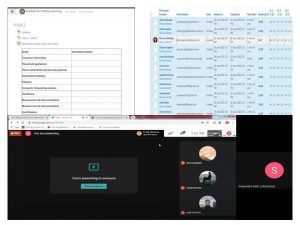 Course overview
Course overview
The main objective of this course is to introduce the general concepts of the Embedded System. The concept includes design of both hardware and firmware to meet the specific needs. It also deals with the study of a variety of communication interfaces that can be used in embedded systems for transferring data. The course considers data communication network, computer architecture, C & C++ and microprocessor as prerequisite.
Participants in piloting
The course is compulsory for third year undergraduate engineering students at the Department of Computer Science and Engineering of Kathmandu University. Approximately 60 students were engaged in the course. All the students have basic understanding of programming languages, computer networking, programming languages, computer architecture and microprocessors. This helps participants to be more active in class.
Use of ALIEN services and tools
During the course, students were exposed to active and problem-based learning with the help of assignment and project works. The assignment which engages students to be more active in the subject area were carried out in groups and their assignment topics should be informed earlier to everyone to avoid repetition. The main theme of the assignment was to research various embedded system fiascos and suggest a configure management process to solve this failure. Students presented their assignment on a plethora of topics such as listed below.
- Boeing 737 MAX
- Northeast blackout of 2003
- Failure of Deep Space 2 mission
- Pace Makers Failures
- Self-Driving Uber
- Mars Pathfinder
- Therac-25 error
- Ariane 5 Flight 501 fiasco
- Computer Chip Fiasco in Nuclear Alarm
- Patriot Missile Fiasco
- Galileo Signal Outage
- AT&T Network Collapse
- Unintended acceleration in Toyota cars
- Air Traffic Control Fiasco
Besides Lab work in various simulators, students were also given a variety of projects at the end of semester that were based on problem-based learning. The project’s theme was suggested on topic areas related to socket programming but other themes were also welcomed/considered, if students have particular interest or any pandemic problem. There was an active participation of students despite pandemic and project presentation and demonstration were conducted online. The active learning lab and its resources will be used by the students once the university resumes in physical mode for project planning and its enhancement. The varieties of projects completed by students are listed below.
- Media Controlled by Phone
- Rover controlled from cell phone
- Desktop screen sync and mouse control with android mobile
- Television Controlled from Smartphone
- Basic Computer Control Remotely
- PC control using bluetooth from mobile app.
- Remote control mouse cursor
- VLC media player control using smartphone
- File transfer over LAN using TCP/IP
- Gas Detection System using Arduino (Tinkercad)
- RADAR System Simulation (Tinkercad)
- Gas Detection System using Arduino (Tinkercad)
- Control presentation slides using phone
- ChromeCast Control Using Phone
- Control LED using remote


